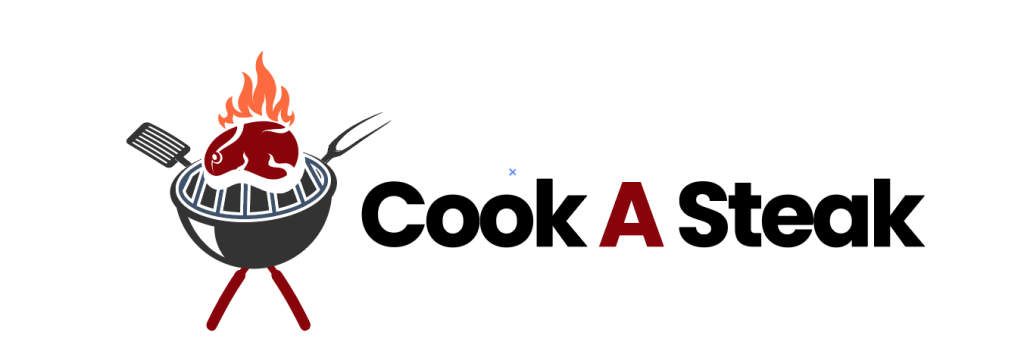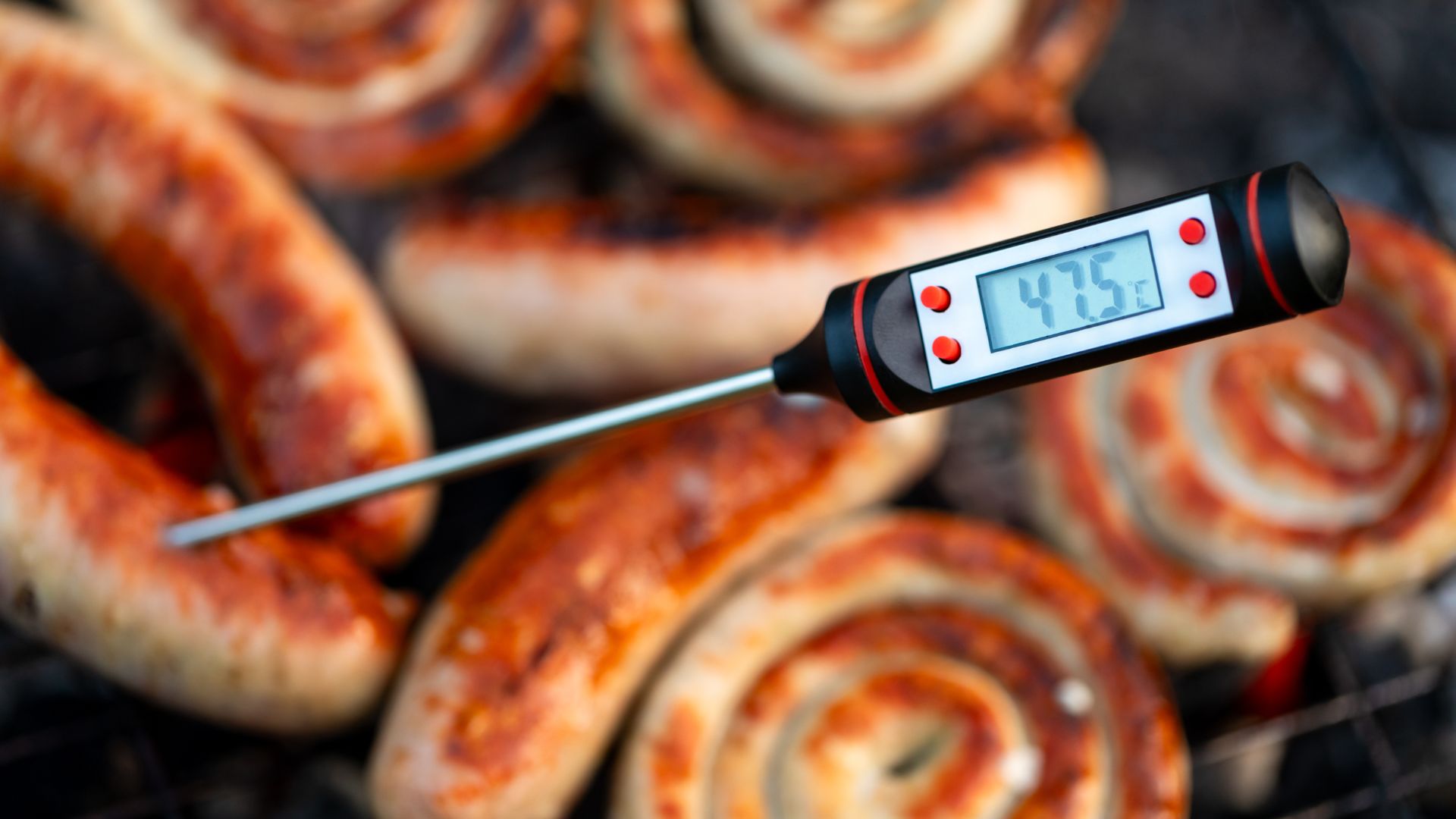As a professional chef with over 20 years of experience running a popular steakhouse, I am often asked what is the best way to check if food is cooked properly. An accurate food thermometer is essential in every kitchen to ensure food safety. So, wondering which type of thermometer checks the surface temperature of food?
When dealing with thick cuts of meat, an instant-read thermometer is indispensable for checking the internal temperature. However, to check the surface temperature of food as it cooks, different types of thermometers are required.
In this article, I will compare and contrast probe thermometers, infrared thermometers, and temperature indicator strips for testing food surface temperatures.
Types of Surface Temperature Thermometers
Probe Thermometers
A probe thermometer is designed with a long and thin metal probe to check the temperature of food at or just below the surface. It gives a precise temperature reading on an easy-to-read digital display.
The thin probe can quickly measure the surface temperature of steaks, chops, chicken pieces, and any other shallow foods. Unlike an instant-read thermometer that is briefly inserted to the thickest part, a probe thermometer is meant to stay in the food throughout cooking for continual monitoring.
Look for options with a wide temperature range (-40°F to 500°F is common) for versatility. Choose a probe with a very thin tip to minimize the penetration depth into the food. Probes with an alarm feature that beeps when hitting target temps are also useful.
I recommend keeping multiple probe thermometers. Place one probe in a steak to track surface temp increase during searing while using another probe to monitor the internal doneness temp.
Purchase ThermoPro TP03H Instant Read Digital Meat Thermometer
Infrared Thermometers
Infrared thermometers, often called laser thermometers, can instantly read a food’s surface temperature from a short distance without having to touch or penetrate it physically. This makes them ideal for very hot cooking applications like grilling, broiling, baking, and frying where probes should not be inserted.
An infrared thermometer works by measuring the thermal radiation emitted from the food surface. You simply aim, pull the trigger, and get the temperature reading from the large digital display.
Look for a thermometer with laser targeting for accurately pinpointing the area being measured, especially for small foods. The laser is safe, so there is no hazard to the cook.
One downside is that infrared readings can be affected by various environmental factors. Use them as a ballpark guide, not a highly precise measurement. I suggest confirming temps with an inserted probe when food comes off the grill or out of the oven.
Temperature Indicator Strips
Temperature indicating strips change color when heated to certain temperatures, giving you a visual cue. Commonly seen on industrial food packaging, these economical strips are also sold for home kitchen use.
The strips have small adhesive backs so they can easily stick to steaks, chicken, baked goods, grill grates, pans, and more. As the food heats up, the strip will gradually change from light to dark color. Match the final color to the temperature scale provided.
Indicator strips are useful for actively monitoring the progression of cooking temperatures. However, they share the limitations of infrared thermometers regarding accuracy. Use them as guidance in combination with a probe thermometer for confirmation.
Tips for Checking Food Surface Temps
Still wondering which type of thermometer checks the surface temperature of food? Here are some of my professional tips when using thermometers to monitor food surface temperatures:
- For grilling, attach temperature indicator strips to multiple spots – the center, edge, and thinner parts will heat differently. Move food accordingly for even cooking.
- When pan or grill searing, use an infrared thermometer to track temperature changes. Remove meat just before it overcooks – the high residual heat will continue raising the temp.
- For fried foods, insert a probe thermometer sideways to monitor oil temperature. Infrared is not as accurate for liquids.
- Let foods rest before cutting to allow heat to distribute evenly to the center. The surface will cool slightly but interior temp will rise.
- Compare temperature readings in multiple spots. One reading may not represent the whole piece of food.
Which Type of Thermometer Checks the Surface Temperature of Food – Frequently Asked Questions
Some of the questions that might help you when wondering which type of thermometer checks the surface temperature of food are as follows:
Why check food surface temperature?
Monitoring surface temperature is critical for several reasons. During searing or grilling, tracking temperature lets you develop the delicious brown exterior without overcooking the interior. Taking surface temps of baked goods like bread ensures the outside is fully cooked before the inside dries out.
For fried foods, surface oil temp regulates even cooking and prevents burning. Getting visual color cues also helps with doneness. Overall, checking food surface temps removes guesswork so you nail the perfect results every time.
When should I use a probe vs infrared thermometer?
A probe thermometer is ideal for thinner foods like steaks, chops, chicken breasts, fish fillets, etc. It gives an exact temperature reading at or just below the surface which is useful for monitoring doneness during cooking.
Infrared is better for very hot applications like grilling, broiling and frying where probes shouldn’t be inserted. Infrared is also great for tracking temperatures of very thick foods. Use both in combination for the best results.
How accurate are temperature indicator strips?
The indicator strips give you a ballpark visual guide, not a precise reading. The final indicator color will get you in the correct temperature range, but a probe thermometer should be used to confirm the exact temperature. Think of indicator strips as an early warning system for temperature increases.
Where is the best place to check food temperatures?
For whole roasts, take temps at multiple locations – the thinner ends will cook faster than the center. For burgers and steaks, probe or infrared temp the thickest part.
Also check thinner areas which will heat first. For grilling, temperature can vary drastically based on location relative to the heat source. Use indicator strips plus a probe to map out surface differences.
Is one surface temp reading good enough?
Rarely – taking temps in multiple parts of food is best. Even when searing steaks, the temperature can spike quickly so monitoring several areas gives more complete data to prevent over or undercooking. The exception is very thin uniform foods like scallops or shrimp that will cook evenly.
How do I know when pan-seared meat is done without cutting it?
Attaching an indicator strip plus tracking exact temps with a probe thermometer as the meat sears lets you monitor the doneness progression without cutting.
For steaks and chops, remove them before they reach the target internal temp – the residual heat will continue raising the temp as it rests. With practice, you can perfect the sear while achieving any doneness level.
Do I really need three kinds of thermometers?
Having different thermometer options provides more valuable info on food temps in various cooking situations. Probes are indispensable for precision monitoring during cooking. Infrared is excellent for hot surface applications where probes can’t be used.
Indicator strips give instant visual cues on temperature increases. While you don’t absolutely need all three, having multiple types makes you better equipped to prevent under or overcooking.
Conclusion
Properly checking temperatures is a vital skill every home cook should master. The right thermometers provide valuable data to remove the guesswork so you can confidently achieve cooking perfection.
I suggest having multiple options like probes, infrared, and indicator strips to collect the best temperature intel possible. With practice, you will learn to leverage temps for perfect results every meal.

